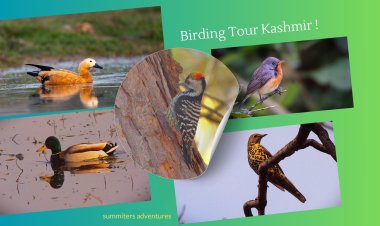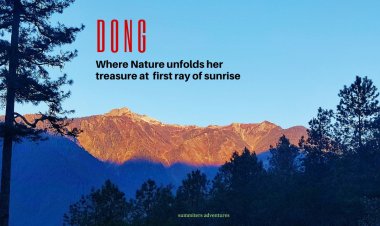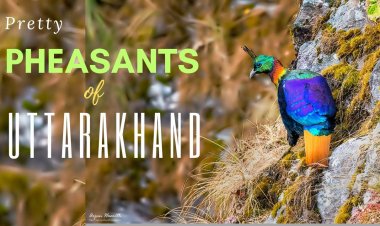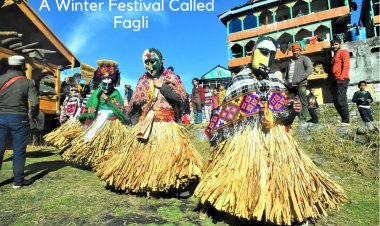In search of elusive cat - Snow Leopard Tour Spiti
Himalayan journeys are in fact itself is quintessential experiences. An expedition in looking for the elusive cat is a lifetime experience itself to cherish !. However, winter is the best time to set foot, when these carefree solitary cats are on the prowl. Where winter showcases the rarest wildlife in the bosom of mother nature. Kibber Wildlife Sanctuary in spiti, is one of the best-kept secrets, which tops the rarest on the list, offering you fantastic chances to find the ghost of the mountains

The Eternal bliss and sight of the Himalayas never cease to allure us. They Kindle our interests and beckon us again and again with new pursuits This year it was neither a high altitude pass nor climbing a snow-capped peak that lingered in our minds.
A unique expedition during winter and it was looking for the Shen, - Often referred to as spirit by cultures, in Ladakh, Lahual, and Spiti regions. It is none other than an elusive grey cat of snow-capped mountains.
The ultimate dream of every wildlife lover.! Isn't it .?
We had a hotlist of places to sight the snow leopard in winter. Even google and a few others recommended the top 10 destinations to plan our trip. It was November, the onset of winter. Even after a lot of co-census between Wildlife enthusiasts and Photographers, whether to head to Himachal or Ladakh, either of them was the only choice that lay before us.
Members left the choice to me, though the destination SPITI was NOT ON THE LIST, finally I zeroed out on the middle land - Spiti. without a second thought.
A few had already been to Hemis National Park in Ladakh, Rumbak, but showed disregard as after weeklong spotting, their efforts went in vain!
Finally, our destination was no other than KIbber -The erstwhile Asia,s highest village and now the abode of the ghost cat of the Himalayas.
In my Himalayan travails, though I had a few surprise encounters face-to-face with common leopards with cubs and other cats, its pug marks during visits in winter, and other wildlife.
But still, I and a few other avid wild enthusiasts were very keen to spot this solitary silent predator the shyest, of all cats in their natural habitat.
FEW FACTS ABOUT SNOW LEOPARD
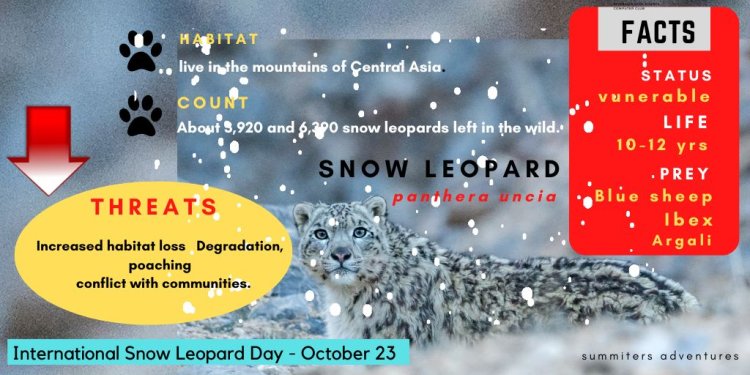
We got Spitied and the journey began
Though Spiti, the Himalayan lover's paradise is sparsely visited during winter due to extremely cold conditions, and roadblocks because of landslides. We decided to visit during peak winter on February 2nd week.
We followed the below itinerary and strongly recommend to those venturing for Snow Leopard Tour in Spiti Valley.
Itinerary
Day 01: Morning Reach Chandigarh Airport Journey to Rampur Enroute Narkanda.Duration 7 Hours.
Overnight stay in Rampur Bushahr Hotel.
Day 02 Journey to Tabo.En route Rekong Peo.Stop at Spillow, for Lunch at Kedar Hotel, the best place to have afternoon meals.Duration 7 Hours.
Overnight Stay in Tabo.
The Journey becomes a bit slower due to road conditions and the power plant work. However, the deep gorges and Sutlej river for the company made out journey exhilarating. The hilltop orchards plum were in bloom with fresh Pink and white cherry blossom swaying and seemed smiling to us.
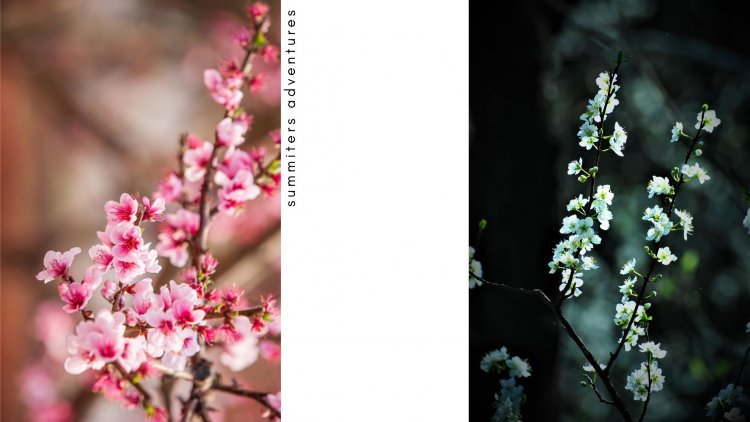
En route we forcibly stopped our vehicle as we were fortunate to spot a group of Himalayan Griffons feeding on a carcass, blocking our path. The winding road, gradually soon climbed up and we could feel the chill. As we crossed KInnaur and passed the Villages of Leo, Nako, the colorful sky in the evening light was alluring.
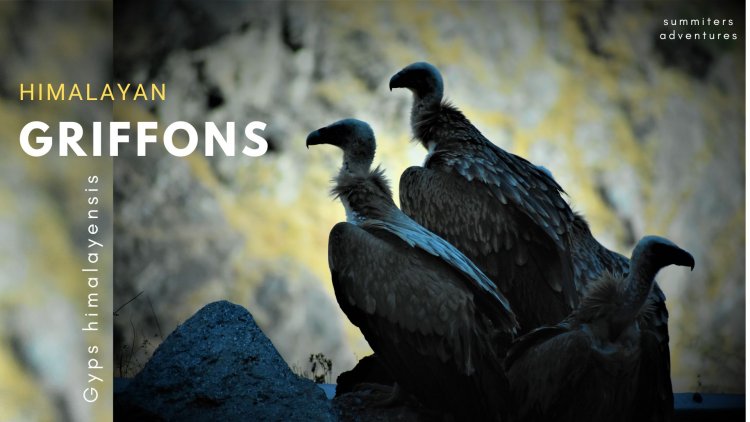
I spotted a pair of Himalayan Red foxes, in one of the hairpin bends. They posed for the camera and In no time disappeared in the darkness. Unmindful of the cold we were engaged in spotting the Carnivore. We felt we were fortunate to have sighted them so easily.
After a few couples of hours of journey, en route to Hurling, we reached Tabo Homestay in the night.
Day 03: Tabo to Kibber Enroute Kaza.
We as scheduled, started our journey, the morning after breakfast and hit the road, and reached the marketplace Kaza. It was forenoon, and we got a message that there is a kill and a snow leopard was spotted near Schichilling Village. We soon dashed to the sight and the information seemed to be genuine. A leopard of relatively 10+ years had killed livestock in the morning and had disappeared in the rocky mountains,
It was a sheer test of patience, craning our necks towards rocky mountains. It was getting cold, and the scanners, through binocs can spot the movement as the light diminished. We could see the grey ghost peeping through the saddle, and moving downward to retrieve the carcass. Deprived of food, the hungry leopard had easily killed the sheep and was struggling the feed due to human intervention.

We felt that it was time to move back and call it a day as we too were tired!
After 2 hours of journey on the winding path, we had an experience of our traveler's tyre going flat, at the entrance of KIbber Wildlife Sanctuary. We admired the star-studded sky and soon in no time reached Kibber Homestay with a warm heater for company.
However the accu weather, predictions were favorable, with sunny weather and snowfall after the next 2 days we were optimistic in our approach to face what was in our destiny.
The cozy homestay in Kibber served as a base for our entire wildlife tour.
Day 4: Kibber Village
As per plan and our daily routine was to head to places to spot the Snow leopards with an open mind. The temperatures in the midnights were -26 Degrees, whereas in the day fluctuated around -15 Degrees to - 18 degrees with wind chill. Though it was sunny with a blue sky, the cold was something as expected.
We walked towards the Kibber Wildlife Sanctuary, accompanied by a team of porters assisting us. The whole trail was packed with snow. We could see snow-clad peaks and brilliant views of Mount Kanamo Altitude of 19,600ft in the backdrop, we normally go during post-winter for expeditions.

The river valley and gorge were our spotting areas, facing the valley overlooking the snow peaks we engaged in observing the movement of snow leopards. The best part was watching them in their natural habitat. The difficult part is being patient at all times, I could meet a few photographers who were frequent visitors, and not fortunate to spot a single one.
 We were hooked to our Binocs and captured the moments. A family of Females and 2 cubs were seen resting on the rocky cliffs, resting in daylight. It is their normal daily routine after a hunt, resting in leisure. Our guide Lobzang from Kaza spotted a Golden eagle soaring above and told us that they are only the predators of Snow Leopards. They fly high in the sky, have sharp eyesight, and have the capability to grab a cub and feed on it. It reminded me of a saying...
We were hooked to our Binocs and captured the moments. A family of Females and 2 cubs were seen resting on the rocky cliffs, resting in daylight. It is their normal daily routine after a hunt, resting in leisure. Our guide Lobzang from Kaza spotted a Golden eagle soaring above and told us that they are only the predators of Snow Leopards. They fly high in the sky, have sharp eyesight, and have the capability to grab a cub and feed on it. It reminded me of a saying...
“When the leopard is away, his cubs are eaten.” — Rwandan Proverb
It is, in fact, impossible to spot creatures resting camouflaged, or in movement.If you don't have binocs at least 10 * 50 DPS of range. If you go armed with 800 Lens, it however holds good with a teleconverter attached. After a long wait in the evening around 5 pm we were able to watch the movement of cubs with their mother traverse the cliff face. We were dumbstruck by its balancing feat and the playful mood of the cubs. it added to our curiosity. A colorful sunset along with this made our day memorable!
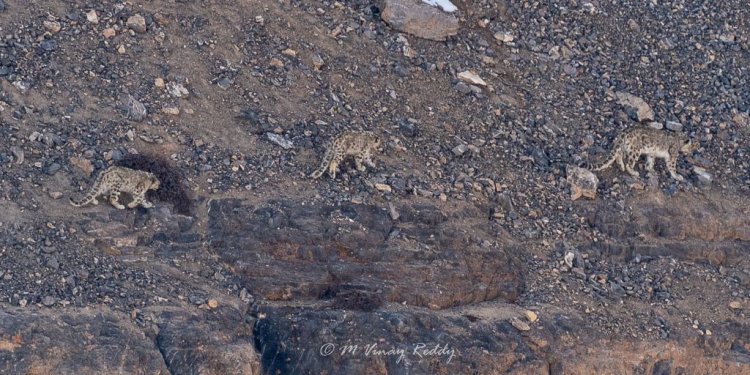
Day 05 KIbber Village
The next day we did not hear about any activity. So we decided to head towards Chicham to look for any wildlife spotting. We took a detour from the mainstream, leaving the main track we walked through the snow. We could spot Blue Sheep foraging in a grassy patch above a snow ridge overlooking Chicham Village.
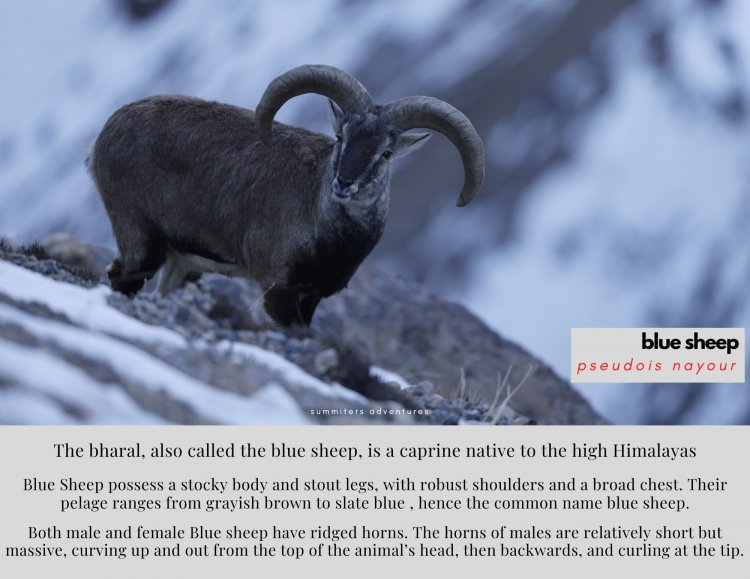
A flock of blue sheep, on the rocky cliff making its way through the vertical cliffs. I remembered watching similar on Discovery, NGC, and Animal Planet. We could even the calls of young ones in distress or caution the flock about any sudden attack. The Chicham village in the backdrop during sunset looked charming!

The Sheep's natural predators include snow leopards, wolves and a Red Fox The Blue Sheep is the Snow Leopard's principal prey on the Tibetan Plateau. Blue sheep freeze when a potential predator is in their vicinity. Their excellent camouflage often results in them being overlooked as part of the landscape.
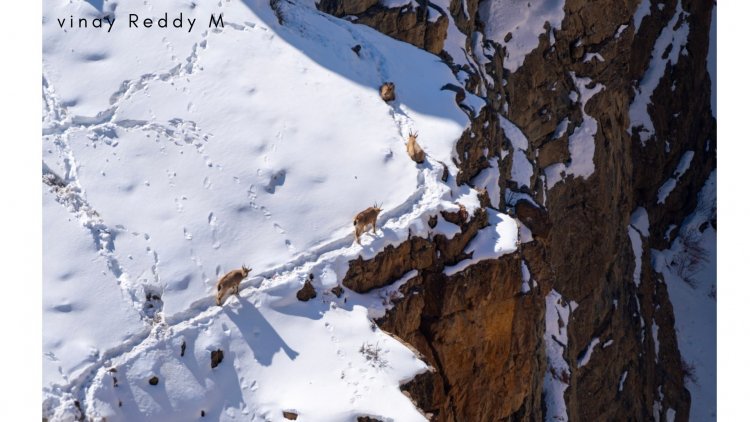
We could even see the movement of Ibex, on snow and on the rocky outcrops which are also the favorite of Ghost cats. Their agile body and swift movements, balancing feats are to be watched, rather than describing it.
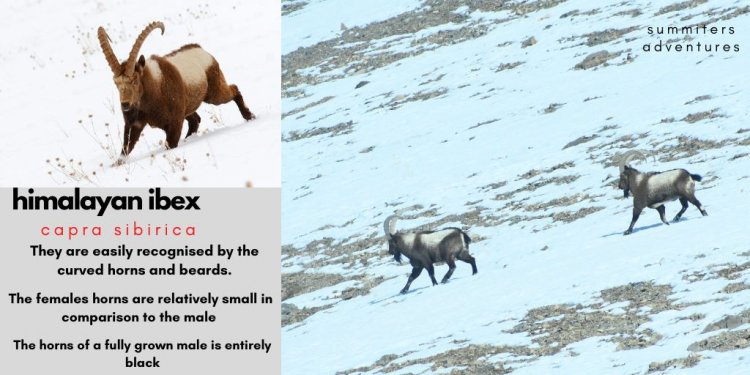
I could even sight of these huge ibexes hanging onto the cliffs and in the snow going. The long curved horns and dense beard are the good features of its male. Have seen them engage in fights over the dominance and right to mate with the female.
Deep valleys, studded with snow and river Spiti skirting through looked like a thin line, was a sight to behold. The wind blowing made our fingers numb. It is something unimaginable during snowfall and literally out of bounds for outsiders!. Standing on the precarious ridge, watching them, photographing these creatures is something highly commendable!

Herd of ibex does not always migrate to lower altitudes in winter and normally stays in fairly high altitudes in snow. Unlike other caprids, they dig crates through the snow to access forage in winter.
We made a customary visit to Chicham Bridge, to make our visit more memorable, the highest in Asia constructed at a height of 13,244 ft above sea level. As the temperature was dipping, so we called it a day. The whole day was spent well, and was worthwhile every moment.!. From here we did not take much time to reach our homestay.
Day 06 A Day at Leisure with elusive Cat
We woke as usual around 7:00 am. With no option left, we unanimously decided to head for the Spiti tour, we headed to Key Monastery, and around 11:00 am, a few expressed their desire to visit Kaza Monastery and visit. the local market too.
The craggy peaks, snow-clad mountains, and never-ending dry mountain landscape run parallel to the valley, unfolding the beauty every moment. Frozen waterfalls, Pinnacles of muddy peaks stand as sentinels greeted us. A true nature work of art.Indeed. Pictures don't make any justice anyhow!

In the meanwhile, we got information about the leopard movement again. We decided to head to the spot. It did not take more than an hour to reach there. We came to know that the Snow leopard was making attempts to kill the livestock and is resting in the hillock. We were able to view it through binocs and lenses. We made a stern decision to get close and observe the movement. Looking at these cats from close quarters and tracking in one of the highest mountain ranges on earth is no mean feat.
We had carried packed lunch and refreshments to keep us warm, and the cat was resting, near a mud mound. We were not in a state to consume it as, the snow leopard was restless, maybe because it was hungry and move anytime!
After a long wait, around 4 pm, it made a movement after a long slumber, made territory marking, and after yawning moved upward on the slope. In the evening light, the whole path glowed in brightness.

We could see the animal at a distance of 1000 feet walking gracefully. It traversed the hillock and again rested among bushes. Hope it knew the exact time of livestock way back to its pen. or livestock corrals.
Every second was, a thrill !. Waiting for the real hunt. As the sun went down in the diminishing light, the Snow leopard made a final attempt, but it was in vain.
We were able to see the Shen about 30-40 feet distance, and our patience paid us finally But we could see the leopard looking at us from the hilltop. During yawning, we could see, it has only 3 teeth. We thought that age could be one reason for Snow leopards, coming down to feed on livestock. The plight of the snow leopard to appease his hunger was a never ending affair. As hunger is for everyone!.
By the time we packed our gear and moved from the place, it was almost 7:00 pm we reached stay in the night!
Day 07: Meeting the winged visitors of Spiti Valley
6:00 am morning we could record a temperature of Minus 26 degrees. Around 9 pm. We came to know that the forest department put a restriction to enter such chilling. In the meanwhile, we heard that the female snow leopard along with, cubs had moved to higher altitudes after a kill. So we have been left with the option of photographing only some birding of the winter birds.
We moved around the Spiti river valley, Rangrik Village, Key Monastery, and Dhankar Villages. We were able to spot a few winter birds
Chukar Partridges
The chukar partridge, or simply chukar, chu·kar ˈchə-kər. also chə-ˈkär. : a grayish-brown Eurasian partridge (Alectoris chukar) is a Palearctic upland gamebird in the pheasant family Phasianidae.
The chukar is a symbol of love and is sometimes depicted as staring at the moon as a sign of its love for the moon. Chakura was a mythological partridge/crow in Hindu mythology that was thought to live in the moonbeams and was a symbol of good luck
It is the National bird of Pakistan. The male is monogamous and the chick follows the parents for feeding. The bird may rarely fly for short distances
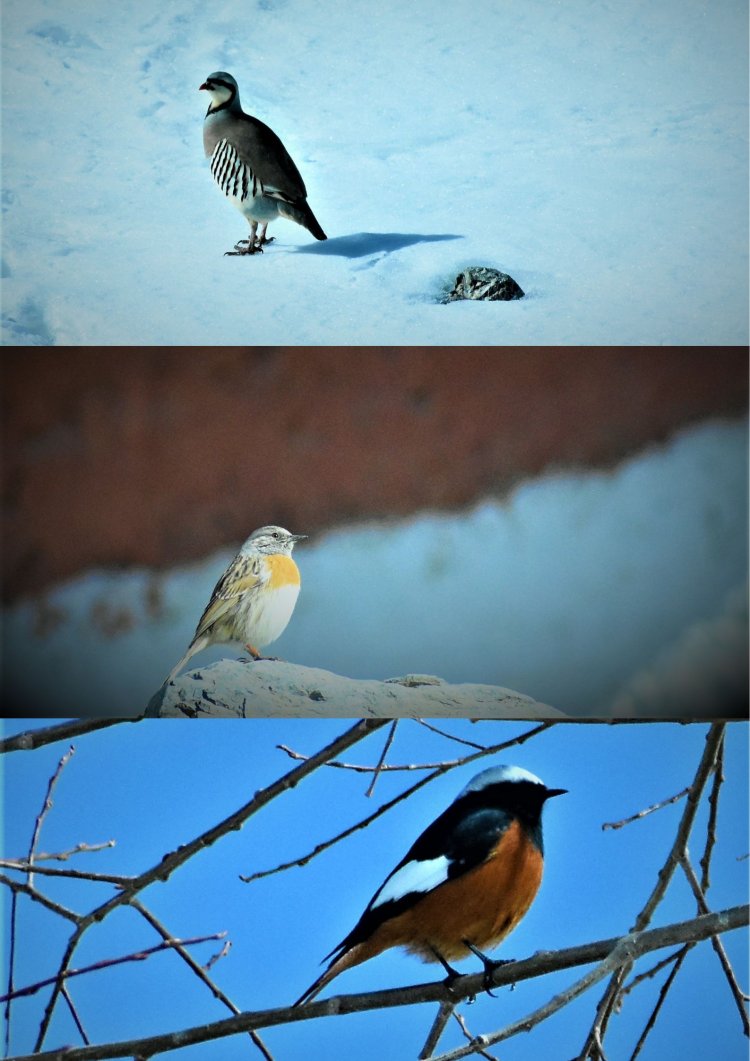
Robin accentor
The robin accentor (Prunella rubeculoides) is a species of bird in the family prunelidae. It is found in the mountainous regions of the Himalayas.In the winter it may move to slightly lower elevations and is often found in stony areas close to human habitations
White-Capped Red Start
The white-capped redstart or white-capped water redstart (Phoenicurus leucocephalus)
It is a Passerine bird of the Old World flycatcher family. Both genders are black with red underparts and white crowns atop their heads. Males have a larger white pattern on top of the head and brown or red spots under the wings. It is found in the Northern Sub Continent. We can see more on the river bed, and bushes along the Spiti river.
We could even spot White Winged Redstart and Common Rose finch. A few water birds drew our attention and though Golden eagle soared above. It was out of reach to capture through our lenses. A short break really was exhilarating as we could encounter the rarest species in ashort visit!
Day 08
We woke up as usual around 7:00am. The sunlight hit the panes of the window cover.No news of any sighting, made us decide to head to the Chicham area again. During our journey on one of the bends, we suddenly saw, a herd of blue dashing towards us, sprinting in panic. We later came to know that they were chased by shepherd dogs on the prowl.
We were able to photographs sitting inside, a few sheep in action. In the meanwhile one of our members spotted, a pair of Red foxes on the snow in the valley.No sooner did we spot them, than they posed at us, resting on a cliff overlooking the valley.
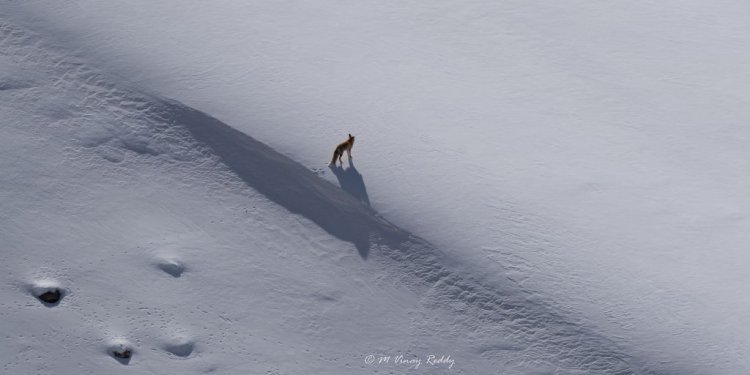
We waited for them, for more than 3 -4 hours, they seemed to have mated and were in deep slumber. They moved shyly and made their way into a cave in the rocks.

It was already, 4 pm, it was chilly and my fingers were numb though there was sunlight. Our guide reminded us of the festival scheduled to happen in the evening. We packed our belongings and bid goodbye to the pair.
We could hear the beat of drums, The festival dechang, commenced around 5 pm, and we danced to the tune of songs with local fold and our beloved companions who had made our tour memorable and savored the local drink Aarak, The whole thing went for the night.
A few of the members, intended to do Astrophotography, as the whole sky looked like an ocean with trillions of stars and the milky way. Though the cold was bone-chilling, Aaarak kept us warm the whole night!
Day 09
We started early around 7:00 am, after thanking everyone who made our Snow Leopard Expedition worthwhile. We had crossed Tabo, then we came to know from watchers that the female along with cubs had come down and was spotted near Chicham gorge. We felt that these animals have the right to roam anywhere. We felt that we were not lucky for a moment ?. Later realized that we are trespassing on their privacy reserved them. It is their Territory and Home, we are just visitors!
The more we trespass into its territory, the shyer they become and move away. It is better to maintain distance, and watch them through our lenses !. We felt!
We took a bath in the natural hot springs at Jeori, after a week. The bath in sulphur springs was rejuvenating. After a short journey, we reached Rampur at night.
Note: You can even visit the Bhimkali temple, by taking a diversion from here.
Day 10
It was the final day of our trip, toward Chandigarh. Sitting beside the window I could see the snow-clad peaks and Kinnaur Kailash range in the distance and remembered my exciting trek of yester years. The Chilly weather had gone. Whereas the thrilling moments, curiosity never ceases to embark us on to exciting places. That is the magic of the Himalayas!
Few facts to know before visiting Spiti in Winer









